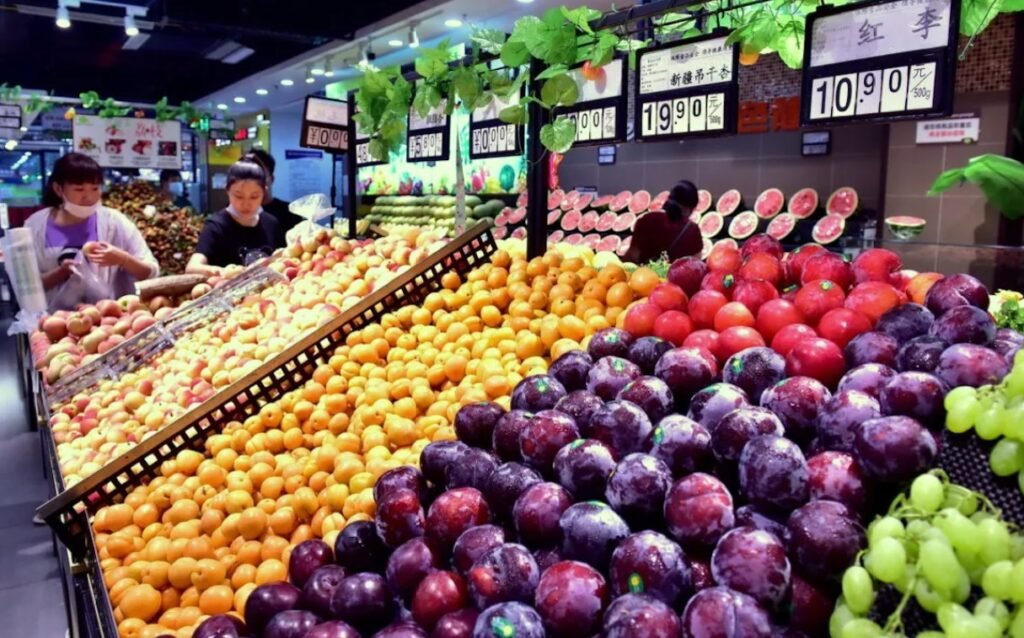China’s economy is facing a new challenge: deflation. The country’s consumer prices fell by 0.2% in October from a year ago, marking the first decline since July and the second since the pandemic began. The main culprit was a sharp drop in pork prices, which account for a large share of China’s consumer price index. Pork prices plunged by 30.1% in October, as the supply of pigs recovered from the African swine fever outbreak and the demand weakened amid the COVID-19 crisis.
Deflation Risks
Deflation, or a sustained fall in the general level of prices, can have negative consequences for the economy. It can erode the profits and revenues of businesses, discourage consumption and investment, increase the real burden of debt, and create a downward spiral of expectations and demand. Deflation can also make it harder for the central bank to stimulate the economy, as the nominal interest rates approach zero and the real interest rates rise.
China has experienced deflation before, in the late 1990s and early 2000s, when the country was undergoing a painful restructuring of its state-owned enterprises and banking sector. At that time, China relied on its export-led growth model and its undervalued currency to boost its competitiveness and demand. However, this strategy is no longer viable, as China faces trade tensions, rising labor costs, and environmental constraints. China needs to shift its growth engine from exports and investment to consumption and innovation, but this transition is not easy and requires structural reforms and policy support.

Policy Dilemma
The deflationary pressure poses a dilemma for China’s policymakers, who have to balance the short-term stimulus and the long-term stability. On the one hand, China needs to boost its domestic demand and prevent the economy from sliding into a deeper slump. On the other hand, China needs to avoid excessive debt accumulation and financial risks, as well as environmental degradation and social inequality.
China has adopted a relatively cautious and targeted approach to its fiscal and monetary policy this year, compared to other major economies. China’s fiscal deficit is expected to widen to 3.6% of GDP in 2023, while its public debt is projected to rise to 62.5% of GDP, according to the International Monetary Fund. These figures are lower than the global averages of 11.7% and 97.9%, respectively. China’s central bank has also refrained from cutting its benchmark interest rate, which remains at 3.85%, and has instead relied on other tools, such as reserve requirement ratio cuts, re-lending facilities, and medium-term lending operations, to inject liquidity and lower the borrowing costs for the real economy.
However, these measures may not be enough to counter the deflationary forces and revive the consumer confidence and spending. China’s core inflation, which excludes food and energy prices, slowed to 0.6% in October, the lowest level since 2010. China’s retail sales, which measure the consumption of goods, grew by 4.3% in October, below the market expectations and far below the pre-pandemic level of 8%. China’s services sector, which accounts for more than half of the GDP and employment, has also lagged behind the industrial sector in its recovery. China’s official non-manufacturing purchasing managers’ index, which reflects the activity and sentiment of the services sector, fell to 56.2 in October, down from 56.3 in September and 58.4 in August.
Outlook and Challenges
China’s deflation problem is likely to persist in the near term, as the pork prices continue to fall and the global demand remains weak. China’s producer price index, which measures the changes in the prices of goods and services sold by producers, fell by 2.6% in October, the 13th consecutive month of decline. This indicates that China’s exporters are facing deflationary pressures from the international markets, as well as rising costs from the domestic factors, such as the environmental regulations, the labor shortages, and the supply chain disruptions.
China’s deflation challenge also reflects its structural and long-term issues, such as the aging population, the income inequality, the low productivity, and the innovation gap. China needs to address these issues by implementing reforms that can enhance its human capital, social welfare, market competition, and technological innovation. China also needs to improve its external relations and cooperation, especially with its major trading partners, such as the US and the EU, to reduce the uncertainties and frictions that hamper its growth prospects.
China’s economy has shown remarkable resilience and recovery from the pandemic, but it still faces many headwinds and risks. Deflation is the last thing China’s economy needs, as it tries to achieve its dual goals of high-quality and sustainable development.
